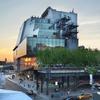More about Me carry my head on my home on my head

Contributor
Me carry my head at home on my head is one of Wangechi Mutu’s many artworks that utilizes collage.
Inspired by the creepy-crawly creatures she saw as a kid looking through her mother’s textbooks, Mutu is well-known for using elements of the natural world in her work (see: She's Egungun Again or One Hundred Lavish Months of Bushwack). She’s also not afraid to unsettle her viewer, provoking their attention by including gore amongst the grass and roots, alongside ribs and other parts of the body— especially the female body.
And this figure is no exception; draped in severed body parts and tendrilous strands of grass, it’s hard to look at it without wanting to head for the hills, or maybe even a bathroom. The body is clearly mutilated, a recipient of violence and pain, possibly a reflection of Mutu’s statement that: “Anything that is desired or despised is always placed on the female body.” However, though the figure’s roots seem stained with blood, and her left hand appears to be entirely lopped off, Mutu’s portrait is not one of a woman in despair. Instead, it depicts a woman in motion. She has one leg poised and ready to go, like she’s about to win gold in the speed-walking event at the Summer Olympics. Her blood-stained roots aren’t chaining her to the earth; they don’t stop her from putting one foot in front of the other. Instead, they’re giving her new life, drawing up the energy needed from the white grass that grows around the stumps where the figure’s feet should be.
But the most interesting (and *titular*) part of the portrait is the figure’s head. There, the figure carries a second body, small but fully realized, with a head and leg. It’s illustrated as a place of refuge, with birds, tarantulas, and butterflies all nestled within, and brown plants flaring upward like bits of coral— like a kick-ass avant-garde Kentucky Derby hat. And, unlike the rest of the figure’s body, the head is not bleeding or gory or disfigured. Instead, it brims with wild, beautiful things, all of them still living and appearing to thrive. Which is a fairly hopeful thing to carry on one’s head. No wonder Mutu calls it a home.
Sources
- Holzwarth, Hans W. (2009). 100 Contemporary Artists A-Z (Taschen's 25th anniversary special ed.). Köln: Taschen. pp. 404–409.
- Joo, E., Keehn, J., & Ham-Roberts, J. (2011). Wangechi Mutu. In Rethinking Contemporary Art and Multicultural Education (pp. 276–276). essay, Routledge.
- Wangechi Mutu (Kenya). Office of International Students & Scholars. (2020, October 30). https://oiss.yale.edu/women-at-yale-50-150/wangechi-mutu-kenya.
- Snyder, H. (2019, November 10). Wangechi Mutu. AFRICANAH.ORG. https://africanah.org/wangechi-mutu-2/.











